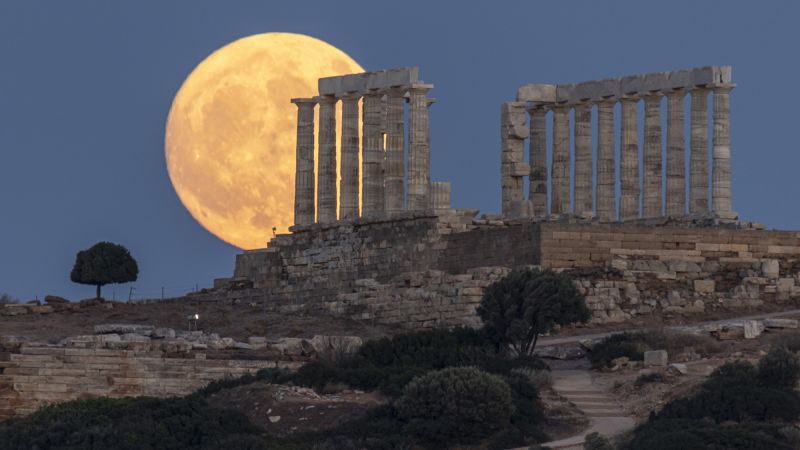This week presents a delightful opportunity for sky enthusiasts as they can witness the full moon nearing its peak illumination. Known to many as the buck moon, this year’s celestial showcase is set to reach its fullest point at approximately 4:37 p.m. ET on Thursday. However, this occurs while the moon remains tucked below the horizon from the perspective of North America. Consequently, stargazers in this region can anticipate their best views a few hours after the sun sets, according to sources like EarthSky and The Old Farmer’s Almanac.
The prevalence of the full moon grants it a special appeal, as it appears full for about a day on either side of its zenith. Noah Petro, the chief of NASA’s Planetary Geology, Geophysics, and Geochemistry Laboratory, shared insights on this phenomenon, stating that the moon will still appear effectively full, even a day before or after the official peak. Thus, if one were to venture out on July 9th to gaze at the moon, the experience would be fulfilling. The same applies for the nights of July 10th and 11th.
Traditionally, July’s full moon is referred to as the buck moon; a name that correlates with the season when the antlers of male deer, or bucks, are in their swift growth phase. The Old Farmer’s Almanac mentions this historical significance, delving into the connections between lunar cycles and nature’s rhythms. Indigenous tribes also have unique names for this lunar event, reflecting their relationship with the environment. The Cree, indigenous to Canada, refer to it as the molting moon, denoting the time period when birds shed their feathers. Similarly, the Tlingit tribe from the Pacific Northwest Coast calls it the salmon moon, marking the yearly salmon migration that takes place during summer.
For those eager to experience this month’s buck moon in all its splendor, choosing a location with a clear view of the eastern horizon is advisable, as suggested by Petro. He further recommends steering clear of areas that are plagued by excessive artificial lighting, which might obscure the moon’s brightness and beauty.
During the full moon phase, planets will not be visible; however, Venus, Jupiter, and Mars will make appearances in the night sky later in the month, providing additional cosmic spectacles for skywatchers. Venusians and Jovians alike can catch a glimpse of these planets low on the horizon before dawn on the 21st and 22nd of July. Their display will be accompanied by the Pleiades and Hyades star clusters as well as the star Aldebaran, creating a mesmerizing morning scene for those willing to rise early for the show.
Adding to the month’s astronomical highlights, Mars will be seen nestled beside the crescent moon on July 28th. This intersection will be visible during the first couple of hours after sunset, allowing observers another chance to feast their eyes on the magnificent display of celestial bodies. Furthermore, July commemorates a historic milestone: it marks the 60th anniversary of NASA’s Mariner 4 spacecraft completing the first successful flyby of Mars in 1965. This mission is notable for capturing the first-ever photographs of another planet from space.
As we head towards the remainder of 2025, enthusiasts can look forward to five more full moons, with particularly notable supermoons gracing the sky in October, November, and December. The Farmers’ Almanac presents a list of the upcoming full moons for the latter half of the year: on August 9, the sturgeon moon; September 7, the corn moon; October 6, the harvest moon; November 5, the beaver moon; and finally, on December 4, the cold moon.
As summer transitions to autumn, two significant eclipse events will take place. A total lunar eclipse, which will cast a shadow across parts of Europe, Asia, Australia, Africa, and beyond, is set to occur on September 7 and 8. This cosmic event will showcase the moon disappearing into Earth’s shadow, which is traditionally observed with a darkening appearance. When fully engulfed in darkness, the moon takes on a reddish hue, often referred to as a “blood moon.” Just two weeks later, on September 21, a partial solar eclipse will take place, visible across parts of Australia, the Atlantic, the Pacific, and Antarctica. As the moon crosses between the Earth and the sun during a solar eclipse, only a portion of the sun’s light will be obscured, creating an extraordinary phenomenon resembling a “bite” being taken out of the sun.












